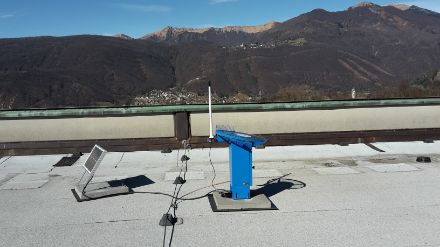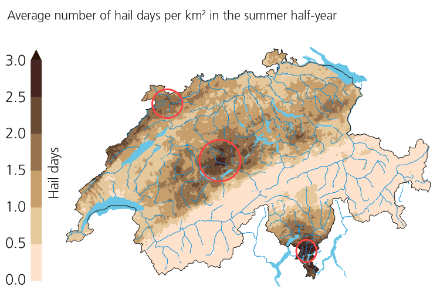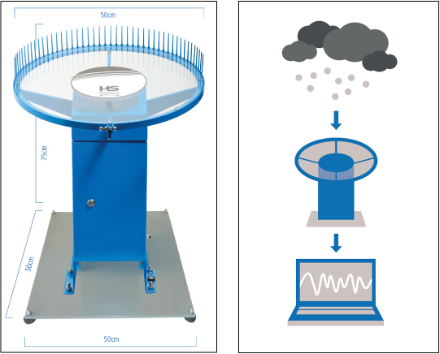Service Navigation
Search

Hail: Unpredictable and difficult to forecast
In Switzerland, hail causes millions of francs worth of damage to vehicles, buildings and agricultural assets, and is the second most costly natural hazard in this country after floods. Individual events can cause damage in the millions within just a few minutes.
Hail has been the subject of numerous research and innovation projects for several years at both MeteoSwiss and the Mobiliar Lab for Natural Hazards at the University of Bern. These research interests have been driven by the increasing demand for precise hail data from industry experts, insurance firms and the general population. Technological developments such as the newly upgraded Swiss weather radar network, and innovations in monitoring technology such as the new fully automated hail sensor play an important role here.
The “Swiss Hail Monitoring Network” project began in the spring of 2018. Eighty automatic hail sensors, to be operated for eight years, were installed in the three regions with the highest likelihood of hail, namely the Napf, Jura and southern Ticino.
In the Napf region, 38 sensors have been installed, while in Ticino there are 27, and in Jura, 15, most of which are located on school roofs or other public buildings (see map).

The automated hail sensors measure the energy and size of hailstones
For the first time ever, thanks to new sensor technology, the kinetic energy and size of hailstones can now be measured automatically and quantitatively at ground level. The establishment of the hail monitoring network provides the scientific community with a valuable dataset. This project is globally unique in the way it combines weather radar data, data from the MeteoSwiss App hail warning function, and data from the hail monitoring network. The novel measurements are intended to be used in conjunction with the app feedback to improve the radar algorithm for identifying and forecasting hail, as well as serving to provide more accurate estimates of potential hail damage.
How it works
The “HailSens” hail sensor consists of a macrolon plate, 50 cm in diameter, which starts to vibrate when hit by a hailstone. The vibrations then register on an ultra-sensitive microphone located underneath the plate. The sensors are thus able to measure the kinetic energy, as well as the size of the hailstones and the time of impact. The data is then transmitted via a mobile phone network to a central data storage location at MeteoSwiss.

Competent partners
This world-wide unique project is being carried out by the Federal Office of Meteorology and Climatology, MeteoSwiss in collaboration with “Mobiliar” (social engagement) insurance company and the Mobiliar Lab for Natural Hazards at the University of Bern. The firm inNET Monitoring AG is responsible for the installation and operation of the hail sensor monitoring network for the entire duration of the project.